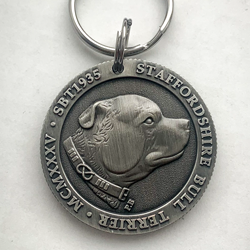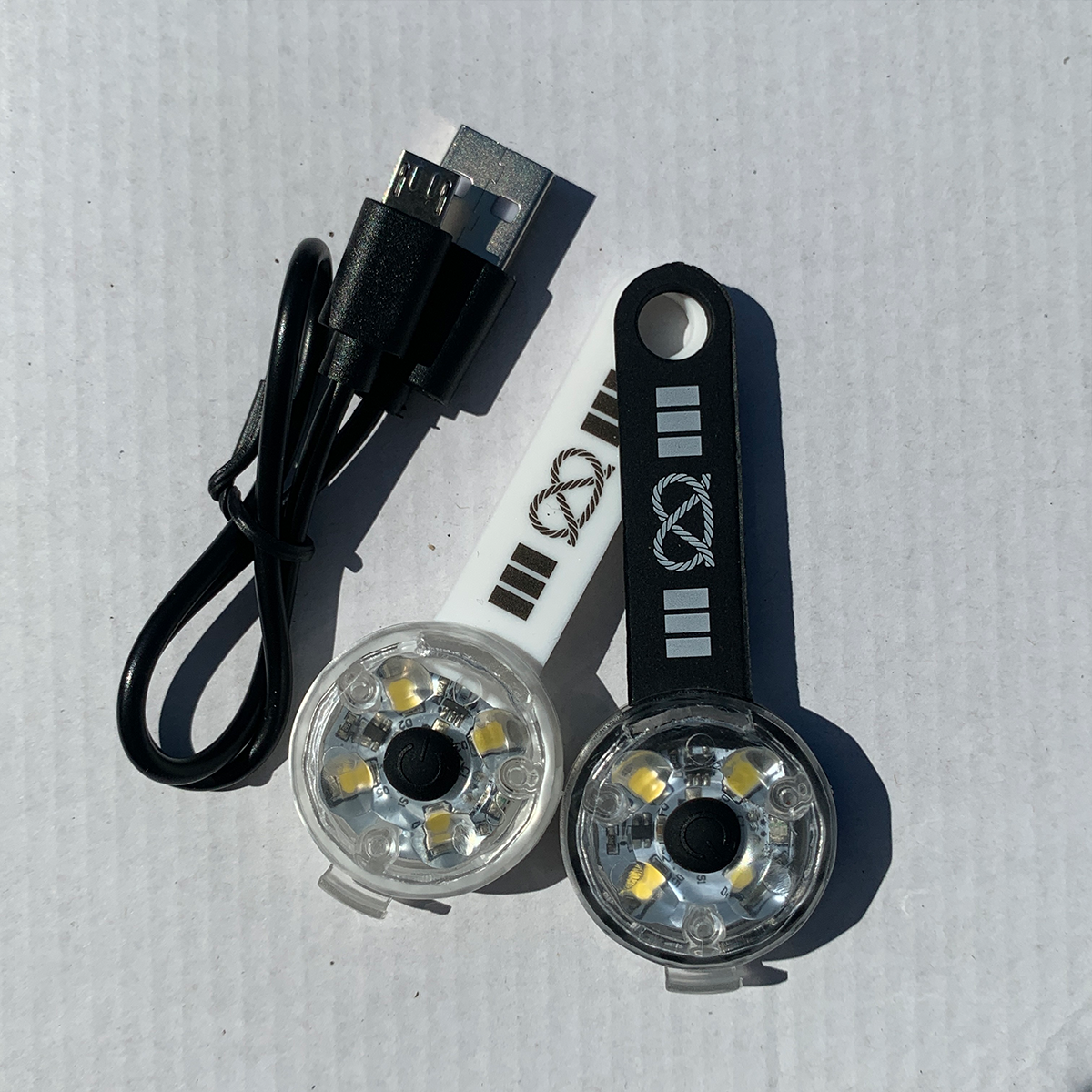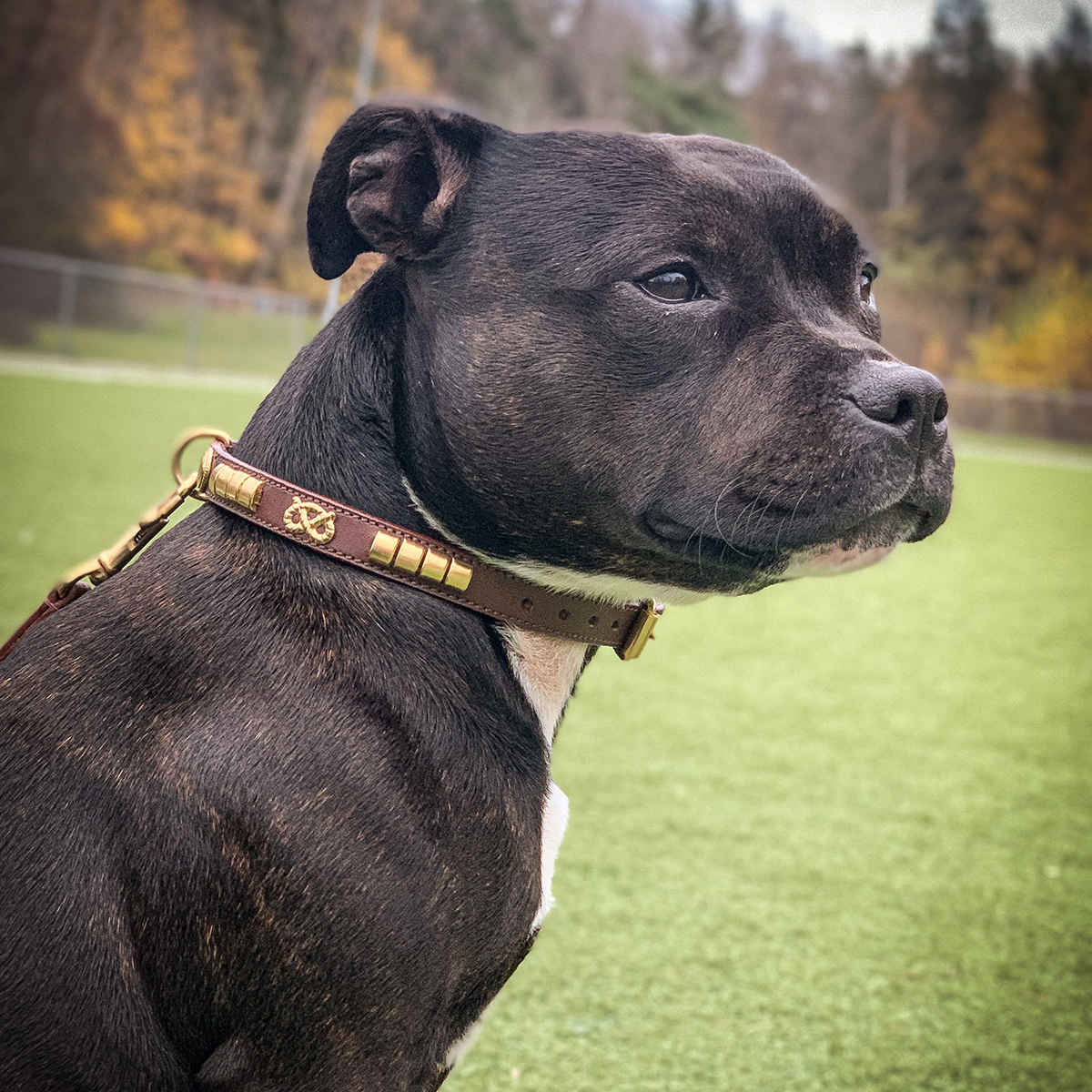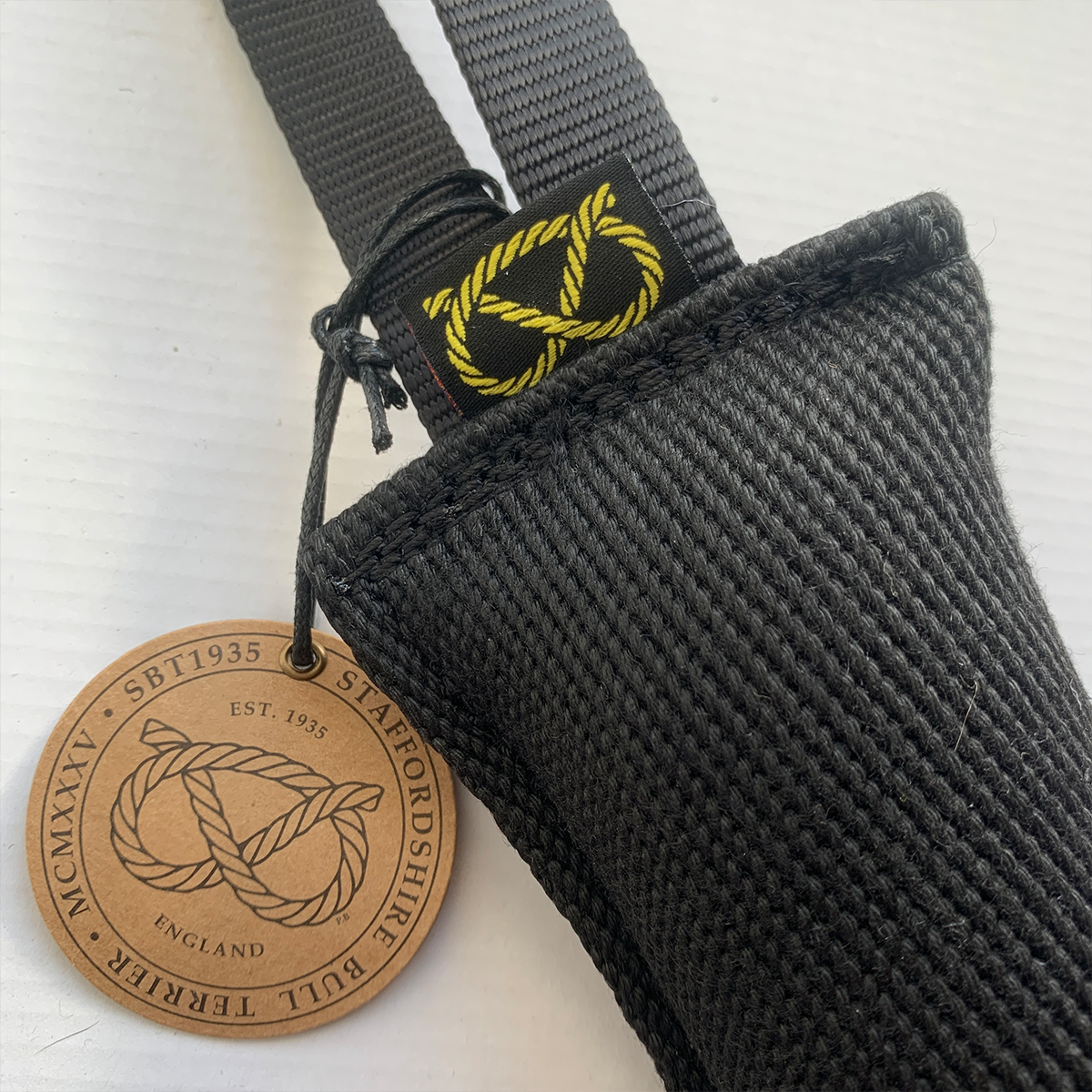Staffordshire Bull Terrier Rasinformation
Staffordshire Bull Terrier, även känd som Stafford eller Staffie, är en ras som inte får förväxlas med sin koloniala kusin, American Staffordshire Bull Terrier. Staffordshire Bull Terrier är något kortare, men ändå lika muskulös och robust. Denna ras är känd för sin lekfulla och roliga natur. Även om Staffords inte letar efter slagsmål, kommer de inte att backa om de utmanas.
Ursprungligen var denna kraftfulla hund uppfödd för att slåss mot hundar och råtta i gropar. Men när dessa grymma metoder förbjöds i England, befann sig rasen utan en specifik roll. Trots sin historia har Staffords alltid varit lojala och beskyddande mot sitt folk. Tidiga avelsprogram syftade till att förbättra dessa egenskaper och lägga till en mildare sida till denna sega ras.
Staffordshire Bull Terriers utseende
Staffordshire Bull Terrier, ofta kallad Staffie, är en ras som omedelbart imponerar med sin muskulösa byggnad och kraftfulla närvaro. Trots deras tjocka utseende och korta växtlighet är dessa hundar förvånansvärt smidiga och energiska.
Staffords huvud är distinkt kort och brett, med framträdande kindmuskler och en kompakt framsida. Deras näsa är svart och deras ögon är mörka, runda och medelstora. Öronen på en Stafford är medelstora, stående halvupprättstående.
En utmärkande egenskap hos Staffie är deras snäva läppar, som döljer ett bett där utsidan av de nedre framtänderna möter insidan av de övre framtänderna. Staffordshire Bull Terriers framben är raka, brett isär och slutar i fötter som vänder ut något. Dessa medelstora fötter är tjockt vadderade, vilket bidrar till deras robusta utseende.
Bakbenen på Stafford är kraftigt musklade, med väl böjda kvävar och är placerade parallellt med varandra. De bakre fötterna speglar framsidan genom att förmedla en känsla av styrka och smidighet. Svansen på denna ras är rak, avdockad och lågt ansatt.
Staffords päls är slät och kort, med hud som sitter tätt. Även om de kan ses i en rad färger, har tvåfärgade Staffords alltid vit som sekundärfärg, även i brindle rockar.
Staffordshire Bull Terriers historia
Idag är Staffordshire Bull Terrier en älskad ras som är en utmärkt följeslagare för familjer. De är kända för sin höga energi och sin roliga personlighet.
Staffordshire Bull Terrier, en robust ras, härstammar från Old English Bulldog och föregångaren till Manchester Terrier för blodsporter i 1800-talets England. På grund av bristen på utrymme i stadsområden för tjur- och björnbete, korsades större tjurraser med mindre terrierraser för att skapa en mindre, snabbare hund för gropkamper, rattning och sport.
Som namnet antyder utvecklades Staffordshire Bull Terrier i Staffordshire för detta ändamål och har nära släktskap med American Staffordshire Bull Terrier, som är något större. Så småningom förbjöds den brutala sporten gropkamp i England. Medan vissa uppfödare fortsatte med olagliga hundkamper, arbetade andra för att föda fram mildare egenskaper hos denna ihärdiga hund.
Det selektiva avelsprogrammet utvecklade framgångsrikt en rasstandard som bevarade rasens beslutsamhet, höga energi och lojalitet, samtidigt som den introducerade egenskaper som foglighet och mildhet. Den här rasen, så tillgiven och beskyddande av sitt folk, fick smeknamnet "The Nanny Dog". Men trots deras milda natur är det viktigt att komma ihåg att denna muskulösa hund aldrig bör användas som ersättning för en barnvakt, för både barnens och hundens säkerhet.
Denna bestämda hund tog sig så småningom till Amerika, där den återigen blev en populär gropfighter. Föredraget för en större hund i Amerika ledde till utvecklingen av American Staffie, som anses vara en separat ras av American Kennel Club. American Kennel Club erkände dem officiellt 1974, och denna ras fortsätter att vara en populär utställningshund och en underbar familjekamrat.
Staffordshire Bull Terrier aktivitetsbehov
Staffordshire Bull Terrier, ofta kallad Stafford, är en energisk ras som kräver gott om tid för lek och träning. Försiktighet bör dock iakttas under grov lek, särskilt när de är unga, på grund av en ökad risk för skenbensfrakturer.
Att ha tillgång till en trädgård eller hundpark för att springa och leka kan hindra din lurviga vän från att använda dina inomhusmöbler som en lekplats. Trots sin aktiva natur är Staffords vanligtvis ganska lugna när de är inomhus. Med tillräcklig motion kan de anpassa sig väl till lägenhetsboende och stadsmiljöer.
För en Stafford är deras livsmiljö mindre viktig än att vara med sina människor. Den här rasen trivs med uppmärksamhet och klarar sig inte bra av att lämnas ensam eller hållas utanför. De är något mer toleranta mot kallt väder än värme och kan överhettas av intensiv träning under varma sommardagar. Se alltid till att din Stafford har tillgång till färskt, rent vatten.
Staffordshire Bull Terrier Underhåll
Att underhålla pälsen på denna hund är en uppgift med låg ansträngning. Dess korta, glänsande päls kräver en snabb borste en gång i veckan. Denna rutin håller inte bara din valps päls ren från smuts och skräp utan drar också nytta av pälsens naturliga förmåga att stöta bort det mesta av smuts. Pälsens smidiga, korta karaktär gör att den inte absorberar obehagliga lukter, vilket gör denna ras till en ren, luktfri följeslagare.
När du ansar din charmiga valp är det viktigt att kontrollera deras öron och rengöra eventuella skräp eller vax för att förhindra potentiella öroninfektioner. Deras naglar tenderar att växa snabbt, så regelbunden klippning är nödvändig. Konsekvent tandrengöring hjälper till att minimera bakterieuppbyggnad och risken för tandkötts- och tandsjukdomar.
När det gäller att mata din Staffordshire Bull Terrier kräver denna energiska ras 1,5 till 2,25 koppar mat, uppdelat på två måltider per dag. Den exakta mängden mat som din Stafford behöver beror på faktorer som deras aktivitetsnivå, ålder och ämnesomsättning. Det är viktigt att övervaka din Staffords näringsbehov och vikt för att undvika att över- eller undermata dem.
Staffordshire Bull Terrier Temperament
Staffordshire Bull Terrier, ofta kallad Staffie, är en ras som trivs med mänskligt sällskap. De är kända för sin lojalitet och sin önskan att vara en integrerad del av familjeenheten. Ofta kallad "The Nanny Dog", Staffies är otroligt förtjusta i och beskyddande mot barn. De tycker om lektid men kanske inte är helt medvetna om sin egen styrka, så det är alltid viktigt att övervaka interaktioner mellan barn och alla hundar, inklusive Staffies.
Eftersom Staffies är en ras som älskar människor är de vanligtvis vänliga mot främlingar, vilket betyder att de kanske inte utmärker sig som vakthundar. Det är dock inte de som backar om de känner sig hotade eller utmanade. Med tanke på deras historia kan vissa instinktiva beteenden mot andra hundar och smådjur fortfarande dyka upp. Det rekommenderas att umgås Staffies med andra husdjur från tidig ålder för att säkerställa att de lär sig lämpliga interaktionsbeteenden.
Att träna en Staffie kan vara en måttlig utmaning på grund av rasens något envisa natur. De som är nybörjare i hundägandet eller de som inte kan ägna den nödvändiga tiden och ansträngningen till träning kanske vill överväga att adoptera denna ras. Staffies kräver en fast men ändå mild ledare för framgångsrik utbildning. Det är avgörande att denna pigga valp erkänner sin ägare som ledaren och bildar ett starkt band med dem för framgångsrika träningsresultat.
Staffordshire Bull Terrier 1935®
Staffe som löper? Håll er fräscha med Staffordshire Bullterrier Tikskydd med Hängslen
Staffordshire Bull Terrier 1935®
Staffe som löper? Håll er fräscha med Staffordshire Bullterrier Tikskydd med Hängslen
Justerbara staffe tikskydd med hängslen och nu även en midjeåtdragande funktion.
Tikskyddet används för att hålla staffen fräsch och ren under löpet men kan vara bra efter operation, förhindrar parning och snoppdropp.
Finns i flera olika utföranden
Andra staffar runt om i världen som använder Staffordshire Bull Terrier 1935® produkter:
Staffordshire Bull Terrier 1935®
Staffordshire Bull Terrier 1935®
Staffordshire Bullterrier Sele & Koppel Set
Ny version med starkare sömmar runt d-ringar samt förbättrat lädermärke
En bredare, staffe-anpassad y-sele med bra vaddering
Lätt att ta av och på din staffe särskilt då den har nacköppning vilket är bra för våra staffar med stora huvuden
Anslut kopplet till en av två punkter antingen bak eller fram för antidrag-funktion
Syns bra i mörkret då den har materialet har reflekterande egenskaper
Levereras med justerbart 1 till 2 m koppel
Inget skav i armhåla eller armbågar







